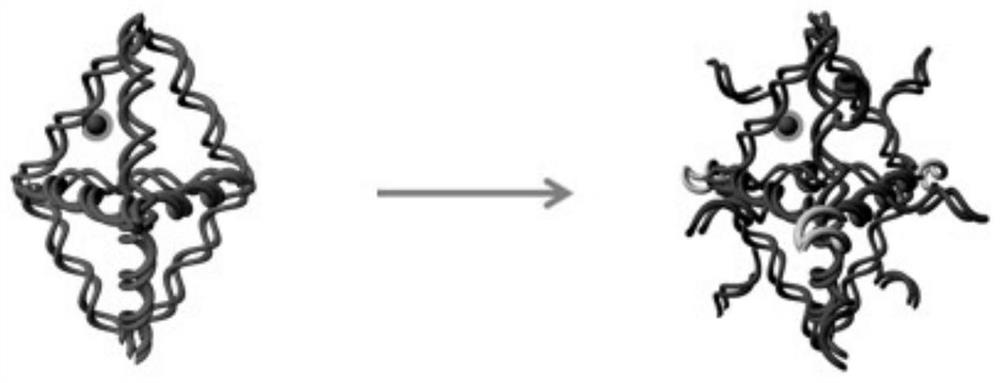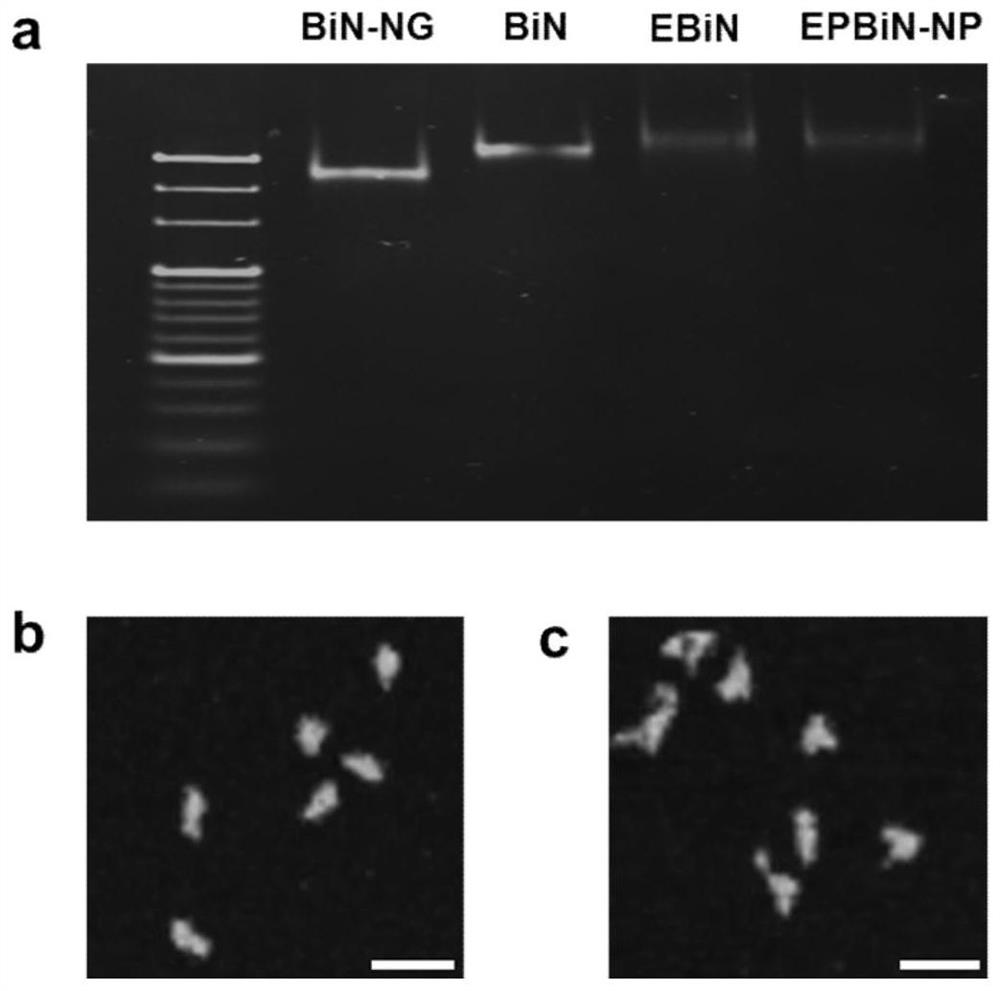NMR-optical dual mode imaging biconical DNA nanoprobe and its preparation method and application
A dual-mode imaging and nanoprobe technology, applied in the field of nanomedicine, can solve the problems of increasing toxicity, low sensitivity of nuclear magnetic imaging, and improving contrast agents.
- Summary
- Abstract
- Description
- Claims
- Application Information
AI Technical Summary
Problems solved by technology
Method used
Image
Examples
Embodiment 1
[0101] Example 1 Preparation of NMR-optical dual-modality imaging biconical DNA nanoprobes
[0102] This embodiment adopts the following method to prepare the nuclear magnetic-optical dual-modal imaging biconical DNA nanoprobe, including the following steps:
[0103] 1. Preparation of DNA-DOTA(Gd) MRI contrast agent
[0104] The nuclear magnetic resonance imaging contrast agent is prepared by a two-step organic chemical reaction. The specific steps are as follows: In the first step, the 5'-terminal amino group is modified, and the 3'-terminal Cy3-modified single-stranded DNA is dissolved in deionized water, and the concentration is adjusted to 200 μM; DOTA-NCS is dissolved in 80% DMSO, and the concentration is adjusted to 200 mM; Strand DNA and DOTA-NCS were mixed in 0.1M HEPES (pH=9, containing 300mM MgCl) 2 ) buffer solution, add magnetic stirring, and react in a water bath at 37°C for 24h. This step is the coupling reaction of amino and isothiocyanate. In the second ste...
Embodiment 2
[0126] Example 2 Preparation of NMR-optical dual-modality imaging biconical DNA nanoprobes
[0127] The difference between this example and Example 1 is that the contrast agent for nuclear magnetic resonance imaging selected in the process of synthesizing the double-cone DNA nanoprobe for nuclear magnetic-optical dual-modal imaging is DNA-DTPA (Gd), that is, DTPA and gadolinium are selected. Chelation. Other than that, the selection of other raw materials, the preparation method and the reaction conditions are the same as those in Example 1, so that the nuclear magnetic-optical dual-mode imaging biconical DNA nanoprobe is prepared.
Embodiment 3
[0128] Example 3 NMR-optical dual-modality imaging of live-cell uptake of biconical DNA nanoprobes
[0129] In this example, the following methods were used to investigate the uptake of living cells by the NMR-optical dual-modality imaging biconical DNA nanoprobe, as follows:
[0130] Due to the excitation wavelength limitation of confocal laser scanning microscopy (CLSM), the modified Dylight800 fluorescent molecule on the DNA probe was replaced with Cy5.5. MDA-MB-231 cells were cultured in 10% fetal bovine serum and 1% double antibody (double antibody is a mixture containing penicillin (10,000IU) and streptomycin (10,000μg / mL) at 100 times the working concentration) complete high-glucose DMEM medium at 37 °C and 5% CO 2 . When the cells grew to about 80% confluence, the cells were digested and re-seeded in 35mm 2 In a confocal dish, the cells were cultured overnight for 12 h. The medium was replaced with a biconical DNA nanostructure (BiN) containing DNA-DOTA(Gd), hybrid...
PUM
 Login to View More
Login to View More Abstract
Description
Claims
Application Information
 Login to View More
Login to View More - R&D
- Intellectual Property
- Life Sciences
- Materials
- Tech Scout
- Unparalleled Data Quality
- Higher Quality Content
- 60% Fewer Hallucinations
Browse by: Latest US Patents, China's latest patents, Technical Efficacy Thesaurus, Application Domain, Technology Topic, Popular Technical Reports.
© 2025 PatSnap. All rights reserved.Legal|Privacy policy|Modern Slavery Act Transparency Statement|Sitemap|About US| Contact US: help@patsnap.com



